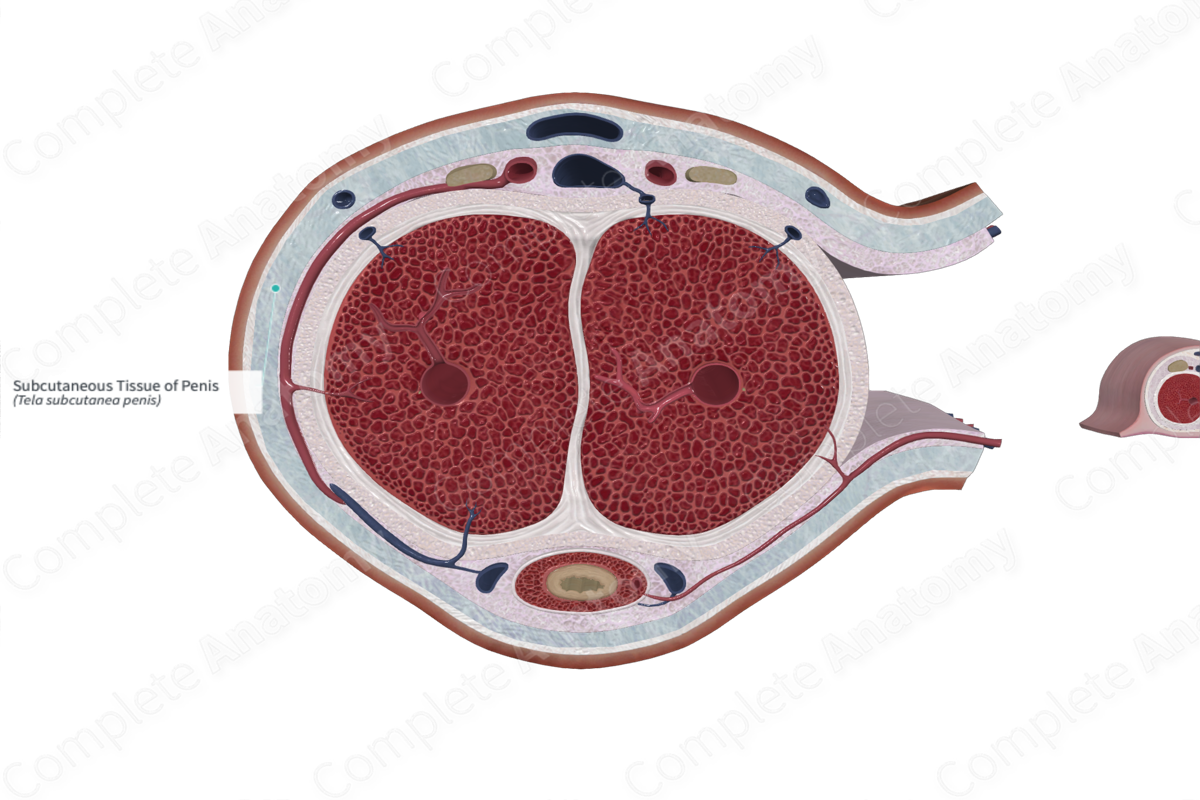
Quick Facts
The subcutaneous tissue of penis is the loose external layer of fascial tissue of the penis, continuous with the dartos fascia and the subcutaneous perineal fascia (Dorland, 2011).
Structure and/or Key Feature(s)
The subcutaneous tissue of the penis is a motile sheath of loose areolar connective tissue that surrounds the penis. Penile skin is loosely attached to this underlying loose connective tissue but at the glans penis it is extremely thin and tightly attached. There is no adipose tissue (fat) in the subcutaneous tissue of the penis (Quartey, 2006).
Anatomical Relations
The subcutaneous tissue of the penis is located superficial to the fascia of the penis and deep to the skin of the penis. It is continuous with Dartos fascia of the scrotum, the membranous layer of abdominal subcutaneous tissue (Scarpa’s fascia) and the membranous layer of subcutaneous tissue of the perineum (Colles’ fascia) (Quartey, 2006).
Function
The subcutaneous tissue of the penis permits a significant amount of movement of the skin of the penis over the underlying structures. This tissue region also transmits the passage of the superficial dorsal vein of the penis and its anastomoses.
References
Dorland, W. (2011) Dorland's Illustrated Medical Dictionary. 32nd edn. Philadelphia, USA: Elsevier Saunders.
Quartey, J. K. M. (2006) 'Anatomy and Blood Supply of the Urethra and Penis', in Schreiter, F. and Jordan, G.H. (eds.) Urethral Reconstructive Surgery. Berlin, Heidelberg: Springer Berlin Heidelberg, pp. 11-17.
